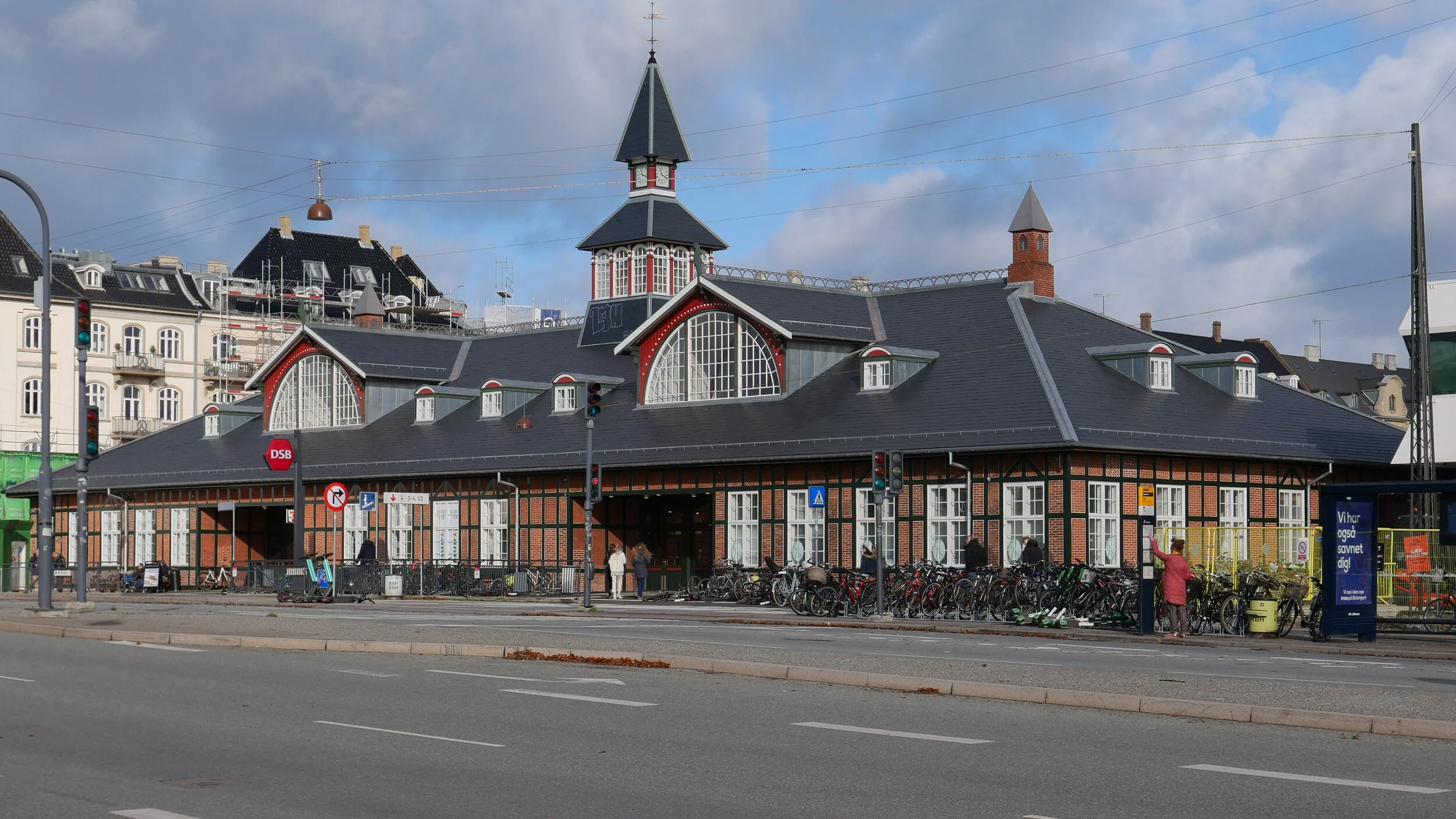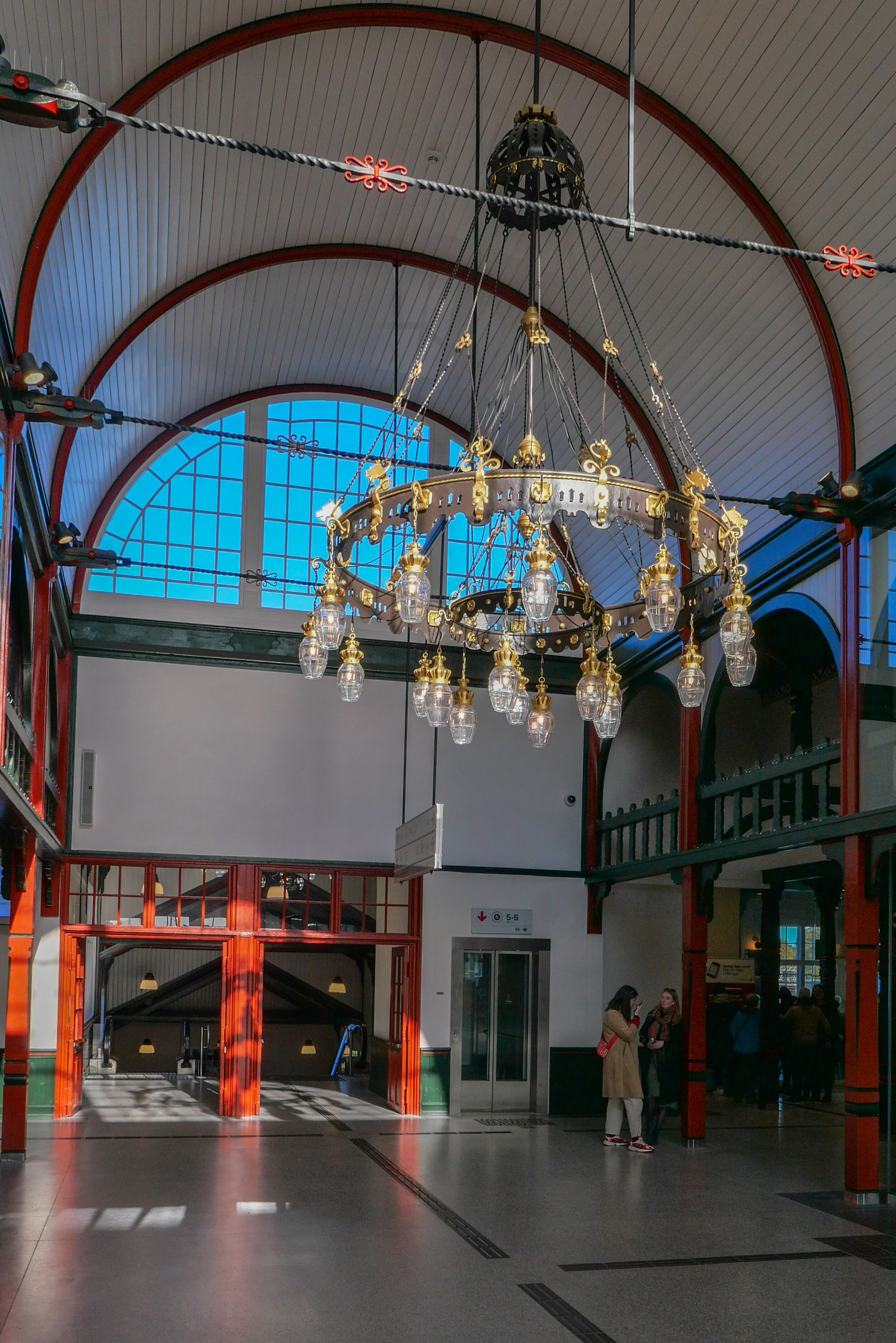is the redevelopment of Vesterport still on track?
/With Covid-19 still to run its course and with uncertainty about what will happen now to the economy, it must be far from clear if the proposed development at Vesterport Station can or should proceed.
The ambitious proposal was to build over a section of the main railway line that here is set down well below the current road level as the tracks follow a sharp curve north from Vesterport Station before a tunnel that takes the trains on below street level to Nørreport.
For a large development in Copenhagen this is unusual because this is not a development of new land or about demolishing existing buildings to redevelop their site but about building in air space above a busy railway line so it is not surprising that the developers, along with private funding, are DSB Ejendomme - the property division of the state-owned rail operator.
For such a controversial development, there seems to be little information on the DSB web site although, a good video about the work of the company has, towards the end, a sort of stick or line-work animation of a relatively modest - so relatively low - scheme at Vesterport that, in the film, fans out along the top of the cutting, but not over the site of the Palads Cinema to the east although that building is now also part of the development, so the animation looks rather like a card sharp spreading out the playing cards to show he is not cheating just before he does.
Drawings for the proposed development that have been published in several newspapers and magazines over the last year or so show four massive tower blocks that rise up off an unbroken podium of buildings that are themselves as high as the buildings around. Two of the towers will be, surprise surprise, hotels.
These towers will be between 50 and 100 metres high so, for comparison, in the Axeltorv development of five round towers - completed just a block away from the Vesterport site in 2017 - the tallest tower is 61 metres high and the iconic tower of the SAS Royal Hotel, immediately to the south of the Vesterport site, is just under 70 metres high. That suggests that these new Vesterport towers will hustle and press against and, presumably, throw a huge shadow over nearby buildings but, and much worse, they will be clearly visible and dominate the skyline from the lakes and, presumably, from most parts of the historic city.
The design is provisional and has to have planning approval to proceed but this is the best stage for the public to object because later on, when the real haggling and trade offs between the planners and the developers begins, then, more often than not, it is all too far down the line for the public to be allowed to have much input.
It may be a 'concept' but what is disconcerting is that it looks like the love child of an accountant and a kid who is a whizz with CAD.
It's a huge development that will be constructed in a single if long programme of building work but it has been split up to look like different developments that just happen to have turned up together. Basically there is one each of the current trends that might curry favour … so there's a tower with a steep external path spiralling its way to a ‘skypark’ at the top that will be described, presumably, as an exciting opportunity for the public to get a new perspective on their city and there is a huge block that is pretending it is slim and subtle by having wavy balconies and wavy walls and a solid tower, slightly tapered and with windows wrapping around the corner to disguise the bulk that gives it a slightly disconcerting serrated outline. The fourth tower is twisted through 45 degrees so that it breaks the street line for no obvious reason other than maybe to get good views towards Ørstedsparken. Presumably a timber-framed tower and buildings using salvaged bricks are already on the drawing board.
From these illustrations it is impossible to see how the scheme relates to its neighbours and it is always suspicious to see buildings that are to look beautiful and exciting in the dark from the air, as one drawing shows, but with no way of judging how it will really look as you approach the area in daylight.
Too many architects produce clever fly-through animation or beautiful aerial panoramas of a development that are not much use when most of us see our city buildings as we trudge past on the pavement.
There is a the suggestion from these drawings that there will be a new plaza across part of the area of the old cinema to the east but little real sense of how this will work with the current road system and this is important because it looks as if the latest proposal is to build across the busy road that now follows the inner or east curve of the railway so where will all that traffic go?
an illustration from Werk - the architects to the scheme - that describes the development as creating a “cultural hotspot that will connect the surrounding urban areas through a green and vibrant connection from Tivoli to Østre Anlæg and between Vesterbro and Inner City.”
To give credit where credit can be given … the south line of the development is taken from the line of Herholdtsgade that links through to the lakes and that would create an interesting public space around the existing railway station.
As for the claim about a green corridor …. that is more dubious because it seems to involve planting across Ved Vesterport - a busy main road - so presumably not in their gift - but, and even more curious, how can any amount of planting here link this development through to Østre Anlæg - the public park 2 kilometres away beyond Statens Museum for Kunst. The claim, and what appears to be a mislabelling of Ørestedsparken in the drawing, is very strange because Werk themselves designed the new forecourt for Statens Museum
Nor does there appear to be a real relationship between the proposed development and the revamped public space to the west of Axeltorv or any suggestion to the problem how traffic will come from Hammerichsgade through to Studiestræde or Jernbanesgade.
Surely, for such a massive development, all of this should be tied in with the possibility of creating a new public space on the north side of the main railway station - where the plan there is also to cover over the railway tracks - and certainly all this has to work with what might or might not be done to pull together the public space and the streetscape of the city end of Vesterbrogade.
If any part of the city desperately needs a bold and imaginative and well-realised master plan then the area west of the city hall is it. Buildings here and mistakes here will have a huge impact that will dominate this part of the city for the next sixty or seventy or eighty years but the problem now may well be that this development over the Vesterport tracks will be presented as what is needed right here right now to kick-start the economy rather than arguing with any conviction that what the city needs right here and right now is massive office buildings or more hotels.











































